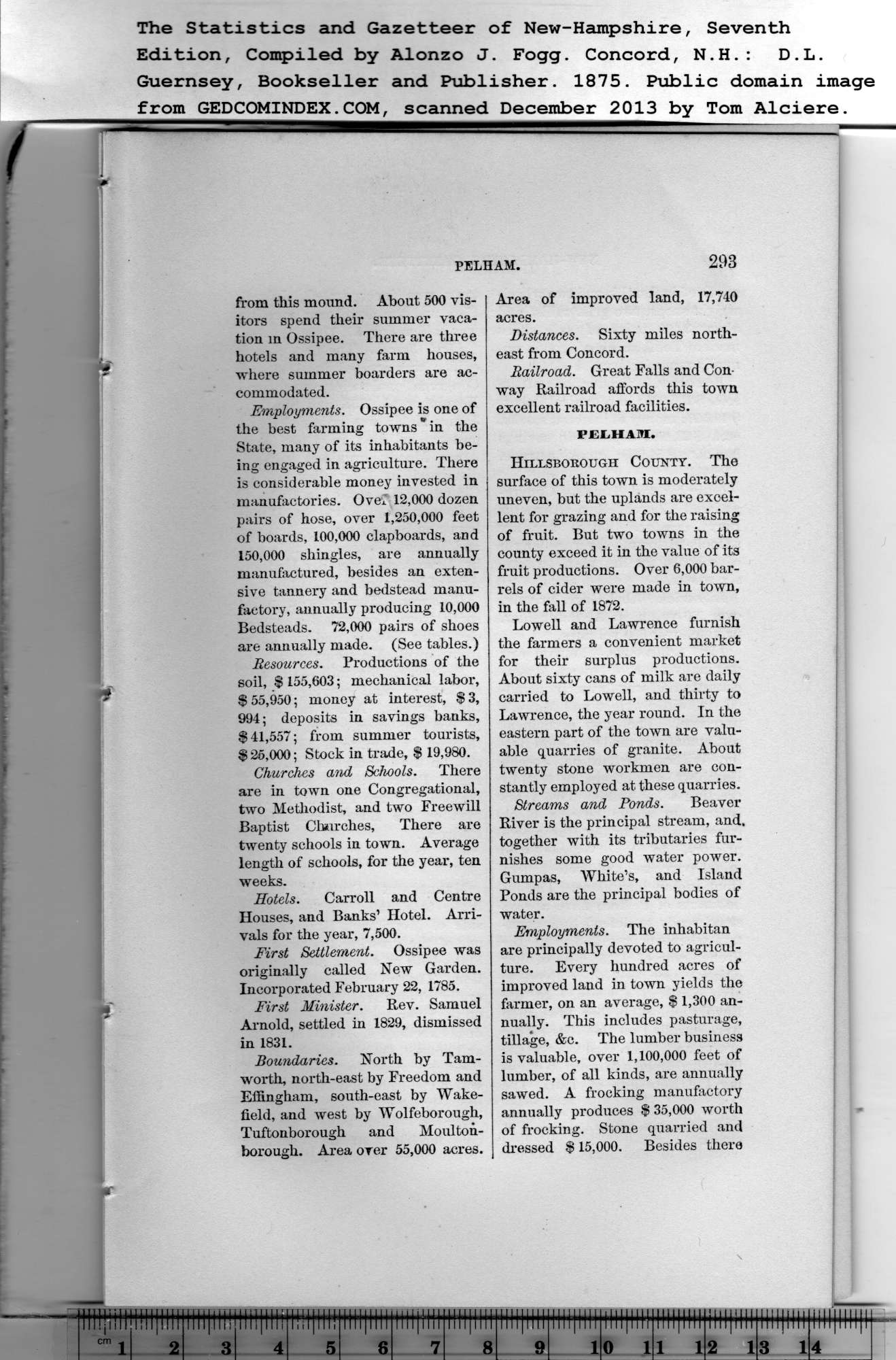|
from this mound. About 500 vis-
itors spend their summer vaca-
tion in Ossipee. There are three
hotels and many farm houses,
where summer boarders are ac-
commodated.
Employments. Ossipee is one of
the best farming towns in the
State, many of its inhabitants be-
ing engaged in agriculture. There
is considerable money invested in
manufactories. Ovel 12,000 dozen
pairs of hose, over 1,250,000 feet
of boards, 100,000 clapboards, and
150,000 shingles, are annually
manufactured, besides an exten-
sive tannery and bedstead manu-
factory, annually producing 10,000
Bedsteads. 72,000 pairs of shoes
are annually made. (See tables.)
Resources. Productions of the
soil, $ 155,603; mechanical labor,
$ 55,950; money at interest, $ 3,
994; deposits in savings banks,
$41,557; from summer tourists,
$ 26,000; Stock in trade, $ 19,980.
Churches and Schools. There
are in town one Congregational,
two Methodist, and two Freewill
Baptist Churches, There are
twenty schools in town. Average
length of schools, for the year, ten
weeks.
Hotels. Carroll and Centre
Houses, and Banks’ Hotel. Arri-
vals for the year, 7,500.
First Settlement. Ossipee was
originally called New Garden.
Incorporated February 22, 1785.
First Minister. Rev. Samuel
Arnold, settled in 1829, dismissed
in 1831.
Boundaries. North by Tam-
worth, north-east by Freedom and
Effingham, south-east by Wake-
field, and west by Wolfeborough,
Tuftonborough and Moulton-
borougk. Area over 55,000 acres. |
Area of improved land, 17,740
acres.
Distances. Sixty miles north-
east from Concord.
Railroad. Great Falls and Con-
way Railroad affords this town
excellent railroad facilities.
pciiHAin:.
Hillsborough County. The
surface of this town is moderately
uneven, but the uplands are excel-
lent for grazing and for the raising
of fruit. But two towns in the
county exceed it in the value of its
fruit productions. Over 6,000 bar-
rels of cider were made in town,
in the fall of 1872.
Lowell and Lawrence furnish
the farmers a convenient market
for their surplus productions.
About sixty cans of milk are daily
carried to Lowell, and thirty to
Lawrence, the year round. In the
eastern part of the town are valu-
able quarries of granite. About
twenty stone workmen are con-
stantly employed at these quarries.
Streams and Ponds. Beaver
River is the principal stream, and.
together with its tributaries fur-
nishes some good water power.
Gumpas, White’s, and Island
Ponds are the principal bodies of
water.
Employments. The inhabitan
are principally devoted to agricul-
ture. Every hundred acres of
improved land in town yields the
farmer, on an average, $ 1,300 an-
nually. This includes pasturage,
tillage, &c. The lumber business
is valuable, over 1,100,000 feet of
lumber, of all kinds, are annually
sawed. A frocking manufactory
annually produces $ 35,000 worth
of frocking. Stone quarried and
dressed $ 15,000. Besides there |
